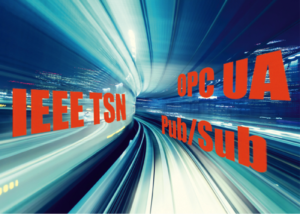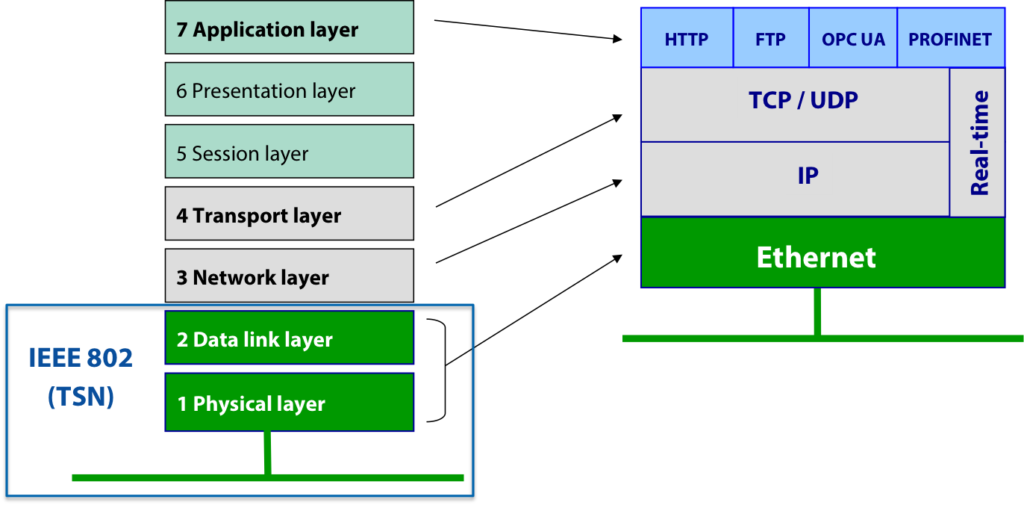It’s been hard to miss all the activity going on recently around time sensitive networking (TSN) and OPC UA. Here’s what it means for the near-term future of PROFIBUS, PROFINET, and industrial networking in general.
 There is a lot of talk going on in industrial automation surrounding two genuinely exciting topics: TSN (time sensitive networking) and OPC UA. Why? It’s because these two technologies seemingly have the potential to make industrial automation easier, more transparent and more valuable than ever. You might be thinking, “Yeah, I’ve heard that before.” But maybe things are different this time. Maybe…
There is a lot of talk going on in industrial automation surrounding two genuinely exciting topics: TSN (time sensitive networking) and OPC UA. Why? It’s because these two technologies seemingly have the potential to make industrial automation easier, more transparent and more valuable than ever. You might be thinking, “Yeah, I’ve heard that before.” But maybe things are different this time. Maybe…
TSN
Let’s start with TSN. It’s difficult to describe what TSN is without the discussion becoming very technical, very quickly. But at its core, TSN is essentially an attempt to make standard Ethernet more deterministic.
An excellent analogy to help explain TSN can be found in telephones. Originally, end-to-end telephone connections were made directly via exchanges. The result was a direct connection between you and the person on the other end of the line. With the advent of cell phones, VoIP (Voice over Internet Protocol) and the Internet in general, telephone connections are now made with little packets of your conversation traversing the network. This has enabled incredible flexibility and scalability, but at the occasional cost of call quality.
TSN aims to merge the old with the new by reintroducing end-to-end connections between Ethernet-connected devices into the packet switching networks (e.g., Internet) used today. Such a merger would allow for highly deterministic communication between TSN-enabled devices using standard Ethernet chips.
OPC UA
Unlike TSN, OPC UA is well understood by many engineers in industrial automation. On top of that, the OPC Foundation is undergoing a bit of a renaissance with its OPC UA technology. What’s been the cause for this renaissance? The reason is OPC UA’s ability to solve many of the communication problems associated with implementing Industrie 4.0 and IIoT (Industrial Internet of Things) solutions.
In the past, OPC relied upon COM/DCOM for communication, which meant it depended on the Windows platform. With OPC UA, however, the technology is platform independent and can be scaled to run on embedded devices all the way up to cloud infrastructures. Additionally, its information models have improved, security-by-design has been realized, and a publish/subscribe feature will soon be implemented, complementing its current client/server model.
What about TSN + OPC UA?
The combination of TSN and OPC UA may seem like an exciting advancement in industrial communication. We at Profibus/Profinet International (PI) embrace both OPC UA and TSN. In fact, TSN is precisely what we’ve been doing for a long time already with Profinet. From its beginning, Profinet has been an open network allowing for highly deterministic control traffic to coexist with all other Ethernet traffic. This is exactly what TSN is hoping to achieve!
The other reason not to get too excited here is simply timing. Parts of the TSN specification are finished, but there are still parts yet to be standardized. And while work continues, completion of that work will take time. After which, products need to be designed, developed, and brought to market.
Some people think that the combination of OPC UA plus TSN can serve as a fieldbus replacement. But that’s not the case, due to the modern nature of a fieldbus. Today, a fieldbus is more than just a protocol. A modern fieldbus handles things like data access, diagnostics, application profiles, uptime, predictive maintenance, safety and much more.
The key takeaway here is to use the right tool for the right task. Just like Profinet isn’t intended to move information directly to the cloud, OPC UA is unsuitable for field level control. But this is where TSN comes in—Profinet and OPC UA can now share a TSN infrastructure all the way down to the field level. This is a critical difference to other fieldbus organizations that position OPC UA and TSN only from the controller upwards. They see those technologies as a threat, whereas PI sees them as an opportunity. When TSN is standardized in Ethernet, it can be implemented with ease into Profinet since standard Ethernet is already employed.
